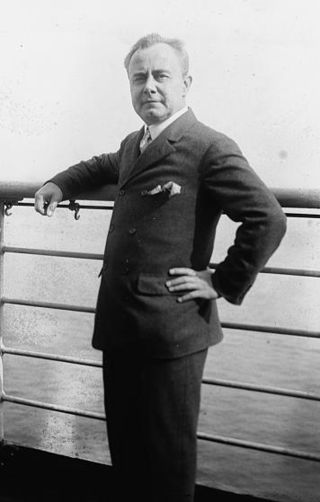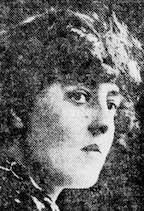Related Research Articles

A player piano is a self-playing piano containing a pneumatic or electro-mechanical mechanism, that operates the piano action via programmed music recorded on perforated paper or metallic rolls, with more modern implementations using MIDI. The rise of the player piano grew with the rise of the mass-produced piano for the home, in the late 19th and early 20th century. Sales peaked in 1924, then declined, as the improvement in phonograph recordings due to electrical recording methods developed in the mid-1920s. The advent of electrical amplification in home music reproduction via radio in the same period helped cause their eventual decline in popularity, and the stock market crash of 1929 virtually wiped out production.

A piano roll is a music storage medium used to operate a player piano, piano player or reproducing piano. Piano rolls, like other music rolls, are continuous rolls of paper with holes punched into them. These perforations represent note control data. The roll moves over a reading system known as a tracker bar; the playing cycle for each musical note is triggered when a perforation crosses the bar.

Josef Casimir Hofmann was a Polish-American pianist, composer, music teacher, and inventor.

Moriz Rosenthal was a Polish pianist and composer. He was an outstanding pupil of Franz Liszt and a friend and colleague of some of the greatest musicians of his age, including Johannes Brahms, Johann Strauss, Anton Rubinstein, Hans von Bülow, Camille Saint-Saëns, Jules Massenet and Isaac Albéniz.

Ossip Salomonovich Gabrilowitsch was a Russian-born American pianist, conductor and composer.

American Piano Company (Ampico) was an American piano manufacturer formed in 1908 through the merger of Wm. Knabe & Co., Chickering & Sons, and Foster-Armstrong. They later purchased the Mason & Hamlin piano company as their flagship piano. The merger created one of the largest American piano manufacturers. In 1932, it was merged with the Aeolian Company to form Aeolian-American Co.

Winifred MacBride, later Winifred MacBride Thomas, was a Scottish-born concert pianist who achieved international acclaim in the first half of the twentieth century, particularly for her interpretations of the works of Beethoven and Tchaikovsky. She also taught piano at Catawba College in North Carolina.
Josepha Barbara Auernhammer was an Austrian pianist and composer.
Rhapsody No. 1, Sz. 86, 87, and 88, BB 94 is the first of two virtuoso works for violin and piano, written by Béla Bartók in 1928 and subsequently arranged in 1929 for violin and orchestra, as well as for cello and piano. It is dedicated to Hungarian virtuoso violinist Joseph Szigeti, a close friend of Bartók, who gave the first performance of the orchestra version in Königsberg on 1 November 1929, with Hermann Scherchen conducting the orchestra.
Bertha ("Bee") Walker (1898–1987) was an American composer and pianist.
JB Floyd is an American concert pianist, composer, and music pedagogue at the collegiate level. Before retiring in 2013, Floyd spent 64 years as a music educator in higher education, including as chairman of keyboard performance at Northern Illinois University from 1962 to 1981 and chairman of keyboard performance at the University of Miami's Frost School of Music from 1982 to 2013. Floyd is a Yamaha Artist.

Sergei Vasilievich Rachmaninoff (1873–1943) was a Russian composer, virtuoso pianist, and conductor. Rachmaninoff is widely considered one of the finest pianists of his day and, as a composer, one of the last great representatives of Romanticism in Russian classical music.

Dai Buell was an American pianist and teacher. In 1921 she gave the first piano concerts heard by radio audiences and in 1931, gave the first concert on TV.

Theodora Sturkow-Ryder was an American concert pianist, composer, music critic and piano teacher, based in Chicago.

Austrian pianist Artur Schnabel was the first pianist to record all of Ludwig van Beethoven's 32 piano sonatas. The recordings were made in Abbey Road Studios in London on a C. Bechstein grand piano from 1932 to 1935, seven years after electrical recording was invented. Originally recorded on 78 rpm phonograph records for the His Master's Voice (HMV) label, they have been reissued numerous times on LP and CD.

Flora Guenzburg Zygman was a Polish-born pianist based in Chicago.
Clara Louise Tunison was an American composer and organist, who is best known for composing songs which she published under the name Louise Tunison.

Marguerite de Pachmann Labori, born Anna Louisa Margaret Okey, was an Australian-born pianist, composer, and music educator. She married two famous men, Russian pianist Vladimir de Pachmann and French lawyer Fernand Labori.

Marguerite Melville Liszniewska was an American pianist, teacher, and composer.

Frances Nash Watson was an American concert pianist and composer. In the 1920s, she was part of a musical trio with Elisabeth of Bavaria, Queen of the Belgians, and Albert Einstein. Later in life she was prominent in social and musical circles in Washington, D.C.
References
- 1 2 3 4 5 Kučinskas, Darius (2021-05-19). Ethnic Piano Rolls in the United States. Cambridge Scholars Publishing. pp. 68–69. ISBN 978-1-5275-6987-4.
- ↑ The Washington Post 1928-03-22: Iss 18907. Internet Archive. 1928-03-22.
{{cite book}}: CS1 maint: others (link) - 1 2 "What you'll hear at the Del-Mar". The Daily Sentinel-Tribune. 1923-03-12. pp. , , . Retrieved 2022-12-12.
- 1 2 3 Jr, Miloslav Rechcigl (November 2, 2021). Notable Americans of Czechoslovak Ancestry in Arts and Letters and in Education. AuthorHouse. ISBN 9781665540063 – via Google Books.
- ↑ "Marguerite Volavy, Pianist, Heard". The New York Times. January 31, 1922.
- ↑ H.t (1932-01-06). "Recital by Marguerite Volavy". The New York Times. ISSN 0362-4331 . Retrieved 2022-12-14.
- ↑ "Marguerite Volavy, Pianist, Plays". The New York Times. 1917-01-19. ISSN 0362-4331 . Retrieved 2022-12-14.
- ↑ American Piano Co (1922). A Catalogue of Music for the Ampico: A List of the Recordings of Pianists Whose Art is Thus Preserved for Present Day Music Lovers and for Posterity : Together with Short Biographies of Many of the Composers and Artists and Notes on the Music. American Piano Company. pp. 172–180.
- ↑ "Player-Piano Rolls". Music & Letters. 7 (2). 1926. ISSN 0027-4224. JSTOR 725878.
- ↑ G., D. (1929). "Player-Piano Notes". The Musical Times. 70 (1034): 328. doi:10.2307/914559. ISSN 0027-4666. JSTOR 914559.
- ↑ Grew, Sydney (1927). "Beethoven's Music in Player-Piano Music-Roll and Gramophone Record". Music & Letters. 8 (2): 290–294. doi:10.1093/ml/VIII.2.290. ISSN 0027-4224. JSTOR 726543.
- ↑ Variety (March 1930). Media History Digital Library Media History Digital Library. New York, NY: Variety Publishing Company. 1930.
{{cite book}}: CS1 maint: others (link) - ↑ "Marguerite Volavy To Give Recital Here". Scarsdale Inquirer. 12 October 1928. Retrieved 2022-12-14.
- ↑ "Marguerite Volavy Plans Music Lecture Recitals — HRVH Historical Newspapers". news.hrvh.org. Scarsdale Inquirer. 15 November 1935.
- ↑ "Ampico Re-Enacting Piano - The Pianola Institute". www.pianola.org. Retrieved 2022-12-14.
- ↑ Brown, Vernon (1972). "A tribute to Margaret Volavy". AMICA Bulletin. 9 (9). Retrieved 2022-12-14.